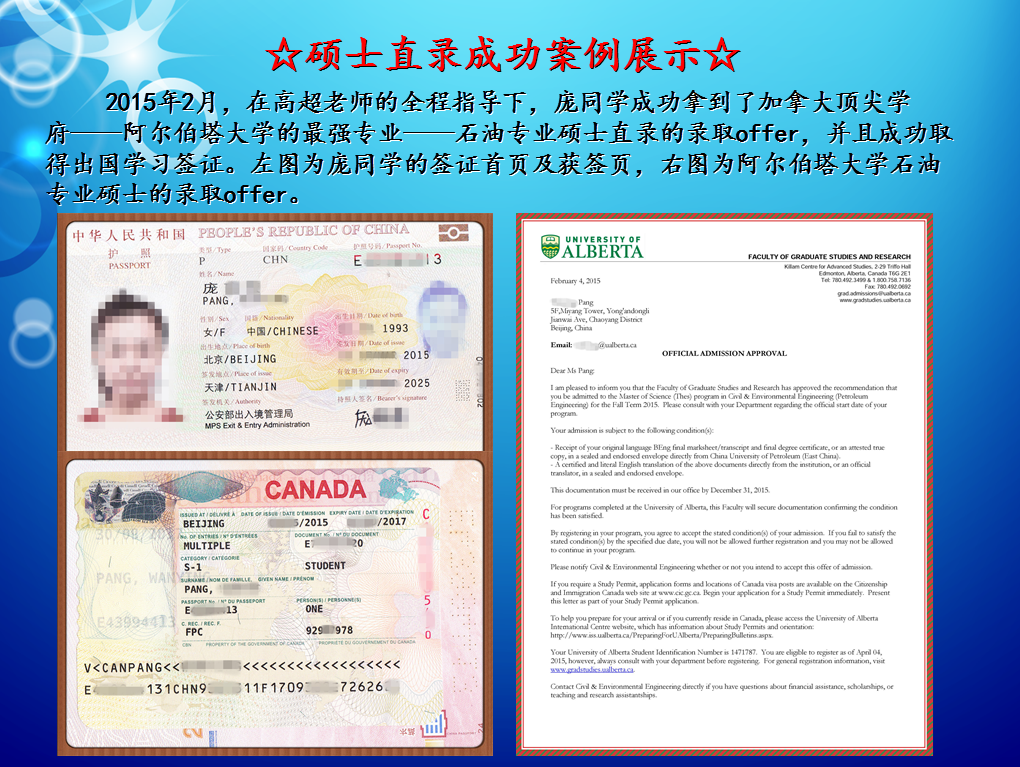GMAT机经,2017年3月GMAT阅读机经(至3.9)(四).
2017-08-10 59阅读
以下GMAT机经为澳际留学独家整理,转载请注明出处,若无注明发现必究!
本GMAT机经由澳际留学独家整理。以下是2011年GMAT机经,2011年3月GMAT阅读机经汇总,自2011年2月25日起至2011年3月9日,共52篇,前33篇机经请见 GMAT机经,2011年GMAT阅读机经(至2.28)(一)至(十九) 以下是34-52篇的整理。
37 恐龙是热血动物还是冷血动物
by pengyayun 3/1/11
还有一篇是讲恐龙是热血动物还是冷血动物的。比较简单。呵呵。反正第二段讲的是一个什么人的研究直接得出了恐龙是恒温动物。大三段讲的就是一个人否定了第二段的观点。用实验证明了第二段的作者忽略了一个什么条件(忘记了)从而得出了恐龙是恒温动物的结论。其实不能得出
考古by 李子木
如果JJ主人回忆正确的话,我没记错的话,GWD上有篇讲到恐龙恒温的 具体文章。。。sorry。。。备战在即 应该是GWD上的!!!而且好像是十几套的。。。TN-24的版本。。。 但愿我没有记错吧
GWD-9-Q33-Q36 G-9-Q33-Q36 TN-24的版本
恐龙那篇:(37) Scientists studying the physiology of dinosaurs have long debated whether dinosaurs were warm- or cold-blooded. Those who suspect they were warm-blooded point out that dinosaur bone is generally fibro-lamellar in nature; because fibro-lamellar bone is formed quickly, the bone fibrils, or filaments, are laid down haphazardly. Consistent with their rapid growth rate, warm-blooded animals, such as birds and mammals, tend to produce fibro-lamellar bone, whereas reptiles, which are slow-growing and cold-blooded, generally produce bone in which fibrils are laid down parallel to each other. Moreover, like the bone of birds and mammals, dinosaur bone tends to be highly vascularized, or filled with blood vessels. These characteristics, first recognized in the 1930’s, were documented in the 1960’s by de Ricqlès, who found highly vascularized, fibro-lamellar bone in several groups of dinosaurs. In the 1970’s, Bakker cited these characteristics as evidence for the warm-bloodedness of dinosaurs. Although de Ricqlès urged caution, arguing for an intermediate type of dinosaur physiology, a generation of paleontologists has come to believe that dinosaur bone is mammalianlike. In the 1980’s, however, Bakker’s contention began to be questioned, as a number of scientists found growth rings in the bones of various dinosaurs that are much like those in modern reptiles. Bone growth in reptiles is periodic in nature, producing a series of concentric rings in the bone, not unlike the growth rings of a tree. Recently, Chinsamy investigated the bones of two dinosaurs from the early Jurassic period (208-187 million years ago), and found that these bones also had growth rings; however, they were also partially fibro-lamellar in nature. Chinsamy’s work raises a question central to the debate over dinosaur physiology: did dinosaurs form fibro-lamellar bone because of an innately high metabolic rate associated with warm-bloodedness or because of periods of unusually fast growth that occurred under favorable environmental conditions? (Although modern reptiles generally do not form fibro-lamellar bone, juvenile crocodilesraised under optimal environmental conditions do.) This question remains unanswered; indeed, taking all the evidence into account, one cannot make a dinitive statement about dinosaur physiology on the basis of dinosaur bone. It may be that dinosaurs had an intermediate pattern of bone structure because their physiology was neither typically reptilian, mammalian, nor avian. GWD-9-Q33 G-9-Q33: The author of the passage would be most likely to agree that the “caution” (line 29) urged by de Ricqlès regarding claims about dinosaur physiology was A. unjustified by the evidence available to de Ricqlès B. unnecessary, given the work done by Bakker and his followers C. indicative of the prevailing scientific opinion at the time D. warranted, given certain subsequent findings of other scientists E. influential in the recent work of Chinsamy ---------------------------------------------------------------------- GWD-9-Q34 G-9-Q34: The primary purpose of the passage is to A. discuss the influence on other scientists of Bakker’s argument concerning the warm-bloodedness of dinosaurs B. provide evidence that supports the claim that dinosaurs were cold-blooded C. challenge the contention that dinosaur bone tissue is innately fibro-lamellar D. evaluate the claim that dinosaur bone tissue provides evidence for the warmbloodedness of dinosaurs E. resolve the disagreement between de Ricqlès and Bakker over the nature of dinosaur physiology ---------------------------------------------------------------------- GWD-9-Q35 G-9-Q35: According to the passage, the discovery of growth rings in the bones of certain dinosaurs served to undermine which of the following claims? A. That modern reptiles are related to dinosaurs B. That bone growth in dinosaurs was periodic in nature C. That dinosaurs were warm-blooded D. That dinosaurs had an intermediate type of physiology E. That fibro-lamellar bone is the product of a rapid growth rate ---------------------------------------------------------------------- GWD-9-Q36 G-9-Q36: The author of the passage mentions bone growth patterns in juvenile crocodiles most likely in order to A. provide support for the argument that reptiles are not related to dinosaurs B. undermine the claim that most reptiles are slow-growing C. offer an explanation as to why juvenile crocodiles differ from most modern reptiles D. suggest the juvenile crocodiles have a type of physiology intermediate between-f mammals and that of reptiles E. suggest that the presence of fibro-lamellar bone does not resolve the debate over dinosaur physiology
以上澳际留学为大家收集整理2011年GMAT机经,以上2011年3月GMAT阅读机经汇总,自2011年2月25日起至2011年3月9日,共52篇,前33篇机经请见 GMAT机经,2011年GMAT阅读机经(至2.28)(一)至(十九)澳际留学祝同学们考试顺利!
以上GMAT机经为澳际留学独家整理,转载请注明出处,若无注明发现必究!
GMAT机经,2011年3月GMAT阅读机经(至3.9)(四)GMAT阅读机经以下GMAT机经为澳际留学独家整理,转载请注明出处,若无注明发现必究!
本GMAT机经由澳际留学独家整理。以下是2011年GMAT机经,2011年3月GMAT阅读机经汇总,自2011年2月25日起至2011年3月9日,共52篇,前33篇机经请见 GMAT机经,2011年GMAT阅读机经(至2.28)(一)至(十九) 以下是34-52篇的整理。
37 恐龙是热血动物还是冷血动物
by pengyayun 3/1/11
还有一篇是讲恐龙是热血动物还是冷血动物的。比较简单。呵呵。反正第二段讲的是一个什么人的研究直接得出了恐龙是恒温动物。大三段讲的就是一个人否定了第二段的观点。用实验证明了第二段的作者忽略了一个什么条件(忘记了)从而得出了恐龙是恒温动物的结论。其实不能得出
考古by 李子木
如果JJ主人回忆正确的话,我没记错的话,GWD上有篇讲到恐龙恒温的 具体文章。。。sorry。。。备战在即 应该是GWD上的!!!而且好像是十几套的。。。TN-24的版本。。。 但愿我没有记错吧
GWD-9-Q33-Q36 G-9-Q33-Q36 TN-24的版本
恐龙那篇:(37) Scientists studying the physiology of dinosaurs have long debated whether dinosaurs were warm- or cold-blooded. Those who suspect they were warm-blooded point out that dinosaur bone is generally fibro-lamellar in nature; because fibro-lamellar bone is formed quickly, the bone fibrils, or filaments, are laid down haphazardly. Consistent with their rapid growth rate, warm-blooded animals, such as birds and mammals, tend to produce fibro-lamellar bone, whereas reptiles, which are slow-growing and cold-blooded, generally produce bone in which fibrils are laid down parallel to each other. Moreover, like the bone of birds and mammals, dinosaur bone tends to be highly vascularized, or filled with blood vessels. These characteristics, first recognized in the 1930’s, were documented in the 1960’s by de Ricqlès, who found highly vascularized, fibro-lamellar bone in several groups of dinosaurs. In the 1970’s, Bakker cited these characteristics as evidence for the warm-bloodedness of dinosaurs. Although de Ricqlès urged caution, arguing for an intermediate type of dinosaur physiology, a generation of paleontologists has come to believe that dinosaur bone is mammalianlike. In the 1980’s, however, Bakker’s contention began to be questioned, as a number of scientists found growth rings in the bones of various dinosaurs that are much like those in modern reptiles. Bone growth in reptiles is periodic in nature, producing a series of concentric rings in the bone, not unlike the growth rings of a tree. Recently, Chinsamy investigated the bones of two dinosaurs from the early Jurassic period (208-187 million years ago), and found that these bones also had growth rings; however, they were also partially fibro-lamellar in nature. Chinsamy’s work raises a question central to the debate over dinosaur physiology: did dinosaurs form fibro-lamellar bone because of an innately high metabolic rate associated with warm-bloodedness or because of periods of unusually fast growth that occurred under favorable environmental conditions? (Although modern reptiles generally do not form fibro-lamellar bone, juvenile crocodilesraised under optimal environmental conditions do.) This question remains unanswered; indeed, taking all the evidence into account, one cannot make a dinitive statement about dinosaur physiology on the basis of dinosaur bone. It may be that dinosaurs had an intermediate pattern of bone structure because their physiology was neither typically reptilian, mammalian, nor avian. 上12下
共2页
阅读全文留学咨询
更多出国留学最新动态,敬请关注澳际教育手机端网站,并可拨打咨询热线:400-601-0022
留学热搜
相关推荐
- 专家推荐
- 成功案例
- 博文推荐

Copyright 2000 - 2020 北京澳际教育咨询有限公司
www.aoji.cn All Rights Reserved | 京ICP证050284号
总部地址:北京市东城区 灯市口大街33号 国中商业大厦2-3层









高国强 向我咨询
行业年龄 12年
成功案例 3204人
留学关乎到一个家庭的期望以及一个学生的未来,作为一名留学规划导师,我一直坚信最基本且最重要的品质是认真负责的态度。基于对学生和家长认真负责的原则,结合丰富的申请经验,更有效地帮助学生清晰未来发展方向,顺利进入理想院校。
Amy GUO 向我咨询
行业年龄 17年
成功案例 4539人
一切的一切从现在开始.用自己的态度闯出一片天
薛占秋 向我咨询
行业年龄 11年
成功案例 1869人
从业3年来成功协助数百同学拿到英、美、加、澳等各国学习签证,递签成功率90%以上,大大超过同业平均水平。
Tara 向我咨询
行业年龄 7年
成功案例 1869人